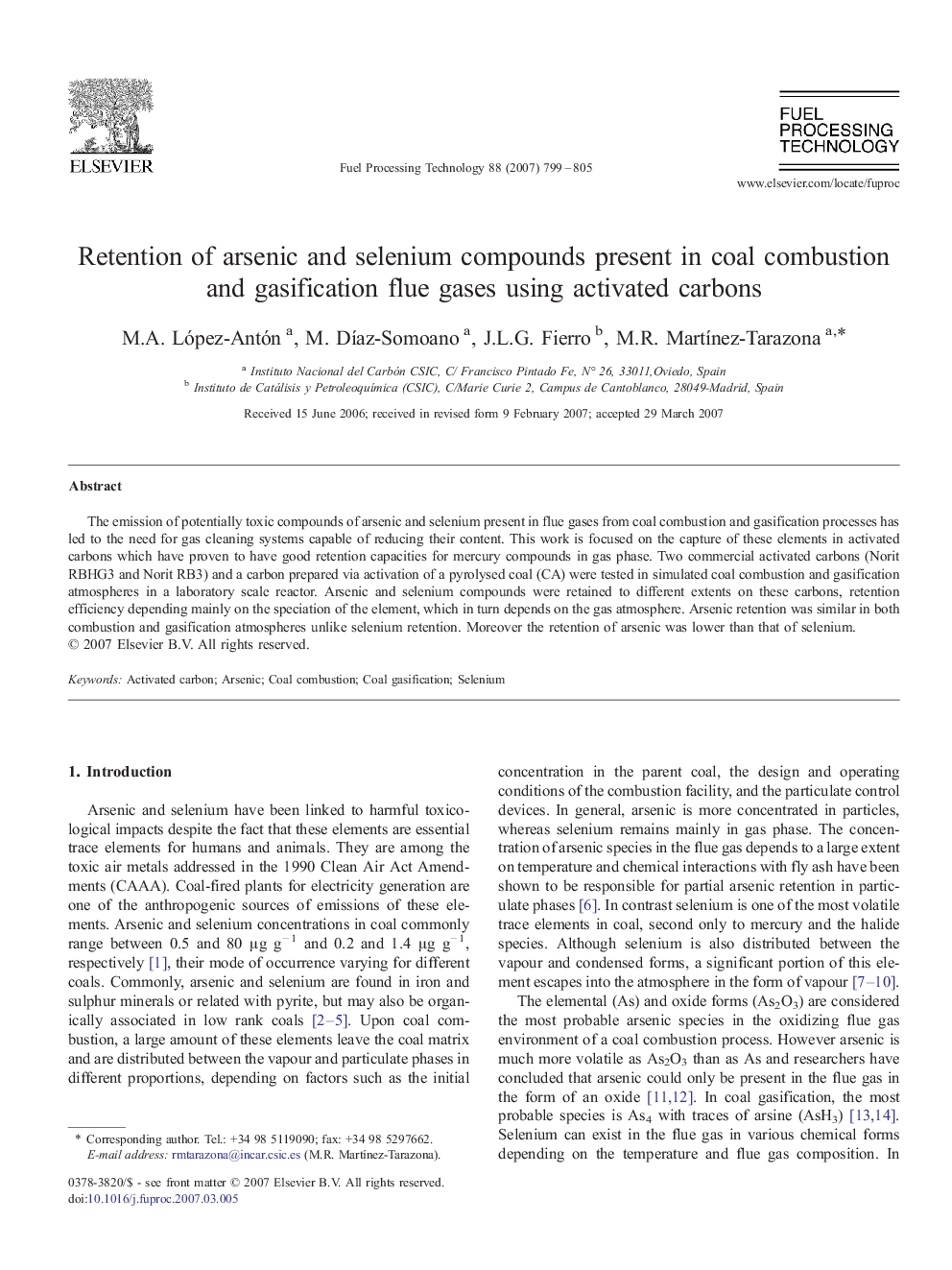| Article ID | Journal | Published Year | Pages | File Type |
|---|---|---|---|---|
| 211543 | Fuel Processing Technology | 2007 | 7 Pages |
The emission of potentially toxic compounds of arsenic and selenium present in flue gases from coal combustion and gasification processes has led to the need for gas cleaning systems capable of reducing their content. This work is focused on the capture of these elements in activated carbons which have proven to have good retention capacities for mercury compounds in gas phase. Two commercial activated carbons (Norit RBHG3 and Norit RB3) and a carbon prepared via activation of a pyrolysed coal (CA) were tested in simulated coal combustion and gasification atmospheres in a laboratory scale reactor. Arsenic and selenium compounds were retained to different extents on these carbons, retention efficiency depending mainly on the speciation of the element, which in turn depends on the gas atmosphere. Arsenic retention was similar in both combustion and gasification atmospheres unlike selenium retention. Moreover the retention of arsenic was lower than that of selenium.
